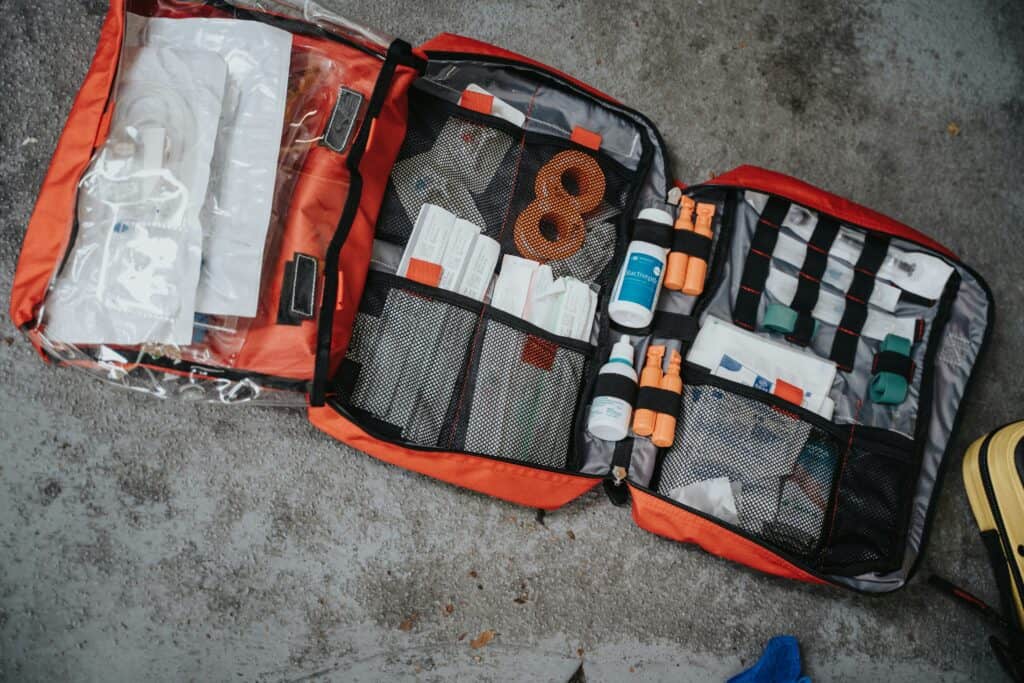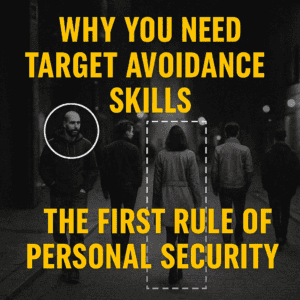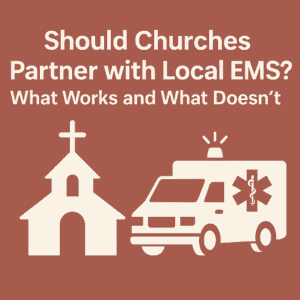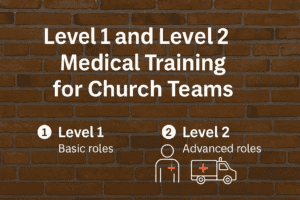Church security has become an increasingly important concern for communities across the nation. A well-prepared and thorough risk assessment is crucial for ensuring the safety and well-being of church members and visitors. Conducting a comprehensive risk assessment helps identify potential threats and vulnerabilities, allowing church leadership to implement appropriate security measures and protocols.
The process begins with a careful evaluation of the entire church facility, including the identification of all possible weather, natural, and criminal events that could occur. By assessing the likelihood, frequency, and severity of each threat, church committees can prioritize which issues need immediate attention. Moreover, understanding the duration and potential warning time of each threat can aid in creating effective response plans.
Gathering relevant information and knowledge about the church’s unique environment and operations is vital during the risk assessment. This includes understanding the facility’s layout, regular activities, and potential areas of concern. By involving a diverse group of church members with varying knowledge and expertise, a more accurate and comprehensive assessment can be achieved, resulting in a more secure and prepared place of worship.
Understanding Church Security
Importance of Safety and Security in Churches
The safety and security of churches are crucial in maintaining a welcoming environment for congregations and visitors. It is essential to recognize that churches are not immune to security risks, such as theft, vandalism, and violence. As houses of worship, churches have a mission to create spaces where their members can feel safe and protected.
With the increase in emergencies and threats occurring at churches, ensuring a secure environment has become more critical than ever. Having an effective risk assessment in place can save lives, protect property, and prevent potential incidents that could negatively impact the church and its congregation.
Roles and Responsibilities in Church Security
It is the collective responsibility of both the church’s leadership and congregation to implement stable and comprehensive safety measures. Establishing a Church Safety Team is an excellent way to identify the roles and responsibilities necessary to maintain a secure environment.
One of the key tasks of the Church Safety Team is to conduct a risk assessment to identify potential threats and vulnerabilities in the existing security plans. This assessment includes identifying threats, developing goals and objectives, creating possible courses of action, planning, implementation, and reviewing the security measures in place.
Church leaders should ensure that their members are well-trained and informed about the safety and security protocols in place. In addition, they should collaborate with local law enforcement and other relevant authorities to address potential threats and weaknesses in their security plans.
By understanding and addressing the safety and security needs of churches, congregations can focus on their spiritual mission with a sense of confidence, knowing that they are protected from potential threats.
Conducting a Risk Assessment

Step-by-Step Guide to Risk Assessment
A comprehensive risk assessment helps church leaders develop a robust plan to address potential threats and vulnerabilities. Follow these steps to effectively evaluate your church’s safety and security:
- Assemble a team: Form a committee comprising of members with diverse skill sets and backgrounds to provide input and perspective on potential risks.
- Identify potential threats: Use brainstorming sessions and research to list all-weather, natural, and criminal events that could happen at your church.
- Assess vulnerabilities: Evaluate the likelihood and frequency of each threat, its expected severity, the time available for warnings, and how long the threat will last. This process helps prioritize risks and allocate resources accordingly.
- Determine existing controls: Identify any existing safety measures and evaluate their efficacy in mitigating the identified risks.
- Develop a risk reduction plan: Based on your assessments, create a practical plan to reduce or eliminate potential risks. This plan should include improvements to infrastructure, policies, and communication methods.
- Implement and monitor: Put the risk reduction plan into action and regularly monitor its effectiveness. Make adjustments as needed to ensure the church remains safe and secure.
Identifying Potential Threats
When it comes to identifying potential threats to your church, consider the following categories:
- Natural hazards: Tornadoes, earthquakes, hurricanes, floods, and other natural disasters.
- Weather-related threats: Severe storms, heavy snow, ice, and extreme heat or cold.
- Human-caused incidents: Arson, vandalism, theft, and other criminal activities.
- Accidental hazards: Electrical fires, kitchen accidents, slips and falls, and equipment malfunctions.
- Public health emergencies: Disease outbreaks and epidemics.
As you develop your list, consult with local law enforcement, emergency management agencies, and neighboring churches for additional insights.
Assessing Vulnerabilities
Once potential threats are identified, it’s crucial to assess the vulnerabilities that could impact your church. Some factors to consider when assessing vulnerabilities include:
- Physical security: Evaluate your church’s overall security, including access control systems, lighting, surveillance, and locks.
- Cybersecurity: Review your digital protection measures, such as firewalls, password policies, and staff training on how to respond to cyber threats.
- Policy weaknesses: Identify any policies that need updating to address the threats you’ve identified. For instance, you may need to revise evacuation procedures in case of a natural disaster.
- Communication: Assess your church’s communication systems, such as mass notifications, emergency plans, and having a designated spokesperson for emergencies.
By thoroughly reviewing your church’s potential threats and vulnerabilities, you can create a confident and knowledgeable risk assessment that serves as the foundation for a robust safety and security plan.
Security Plan Development
Creating a Comprehensive Security Plan
Developing a comprehensive security plan is a crucial step in protecting church congregations. This process begins by conducting a thorough risk assessment which involves listing all potential weather, natural, and criminal events that could occur. To do so, identify the likelihood of these threats occurring, the frequency with which they might occur, and the time available for warnings. By evaluating these concerns, church leaders can design a plan that addresses vulnerabilities and weaknesses in their security environment.
Components of an Effective Church Security Plan
An effective church security plan should encompass several key components:
- Risk Assessment: Identify potential threats and their likelihood, severity, and warning time by consulting local law enforcement and analyzing church history.
- Prevention and Deterrence: Implement policies and procedures to minimize the chances of security incidents occurring.
- Protection: Employ security measures to safeguard people and property from harm.
- Response: Establish protocols for handling security incidents and ensuring the safety of the congregation.
- Recovery: Plan for returning to normal operations after an incident, including evaluating what went wrong and making improvements.
Including these elements will help create a well-rounded plan that addresses the unique needs of your church.
Regularly Reviewing and Updating the Plan
It is essential to constantly review and update security plans, as threats and circumstances can change over time. Church leaders should conduct regular risk assessments and evaluate their current security measures to ensure they remain effective. This process will also help identify new vulnerabilities and allow for adjustments to be made as needed.
In conclusion, a comprehensive and effective church security plan requires careful planning, constant evaluation, and a commitment to the safety of the congregation. By addressing potential threats and incorporating key components, church leaders can develop a security plan that protects their congregation and property.
Building a Security Team
Recruiting and Screening Volunteers
Creating a strong security team for your church begins with recruiting the right individuals. It is essential to look for volunteers with experience in security, law enforcement, or military backgrounds. The pastor and church board can oversee the recruitment process and screen potential candidates for the security ministry.
It is crucial to screen volunteers thoroughly to ensure they have the necessary skills and mindset to protect the congregation. This process may include background checks, personal interviews, and reference checks. When selecting team members, consider various factors such as their knowledge of the church, their security experience, and their ability to respond appropriately in different situations.
Training and Equipping Volunteers
Once you have recruited your security team, it is necessary to train and equip them with the tools and knowledge needed to effectively protect your congregation. This may involve providing seminars on church security, and organizing regular training sessions on topics such as emergency response planning, risk assessment, and conflict resolution.
Ensuring your security personnel receive ongoing training is essential so that they are well-prepared to handle any potential issues. This includes staying current with safety procedures, risk management, and technological advancements. Training sessions should also cover specific threats relevant to your church community.
To successfully equip your security team, it is crucial to provide them with the proper resources and tools. This might involve investing in security cameras, alarm systems, communication devices, and access control systems to protect the premises and monitor suspicious activities. In addition, establish protocols that allow the security team to efficiently communicate with one another and the church staff during emergencies.
The security director should play a central role in supervising the team, conducting regular meetings to address any concerns, and ensuring that protocols are followed. By carefully selecting and investing in your church’s security personnel, you can create an effective security ministry that fosters a safe and welcoming environment for worship and fellowship.
Access Control and Surveillance
Church security is an important aspect of ensuring the safety and well-being of the congregation and staff. One central area in conducting a church risk assessment is the implementation of access control measures and the utilization of surveillance technology.
Implementing Access Control Measures
Effective access control in a church setting helps restrict unauthorized entry, thereby reducing the risk of unauthorized activities and potential harm to people or property. Access control measures can be implemented in a variety of ways:
- Physical barriers: Use secure doors, gates, and fences to delineate restricted areas and limit access to only authorized individuals.
- Visitor management: Implement a check-in system for visitors and require that they wear guest badges or other forms of identification while on church property.
- Key control: Use restricted key duplication, electronic key cards or biometric access control systems to control access to specific areas within the church.
- Security personnel: Employ trained security staff or volunteers to monitor entrances and exits.
Utilizing Surveillance Technology
Video surveillance technology is a valuable tool for enhancing church security, providing real-time monitoring of the premises, and aiding in incident investigation if necessary. Some ways in which surveillance systems can be effectively integrated into a church’s overall security plan include:
- Strategic camera placement: Cameras should be installed in critical locations, such as entry points, hallways, parking lots, and other high-traffic areas.
- Remote monitoring: Utilize internet-connected video surveillance systems that allow for remote monitoring of live feeds or recorded footage by security personnel or church administrators.
- Integration with access control systems: Combine surveillance technology with access control measures, such as key card readers or alarm systems, to provide an additional layer of security and track access to restricted areas.
- Regular maintenance: Perform routine checks and maintenance on cameras, storage devices, and software to ensure the surveillance system remains operational and up to date.
By implementing access control measures and utilizing surveillance technology, a church can create a more secure environment for its congregation, staff, and visitors. Regular risk assessments and updates to security policies will further help maintain the safety and security of the church community.
Emergency Protocols and Drills
Developing Emergency Protocols
It’s crucial for churches to have well-developed emergency protocols in place to protect their congregation and facilities. These protocols should address potential threats such as fires, tornados, other natural disasters, and security breaches. Begin by assessing your church’s vulnerabilities and identifying possible risks that may arise.
Once you’ve identified potential threats, establish clear procedures for responding to each type of emergency. For example, create an evacuation plan for fires, detailing escape routes and instructions for congregants. Establish communication channels for notifying emergency responders and congregation members during a crisis. Ensure that all staff and volunteers are trained in these protocols and understand their roles in the event of an emergency.
Conducting Regular Drills
Regularly conducting drills is essential in ensuring that your church is prepared for emergencies. Drills help familiarize congregants with emergency procedures, making it more likely they’ll respond appropriately during a real crisis. Aim to conduct fire drills at least twice a year and consider implementing additional drills for other emergency situations, such as lockdowns or severe weather.
During drills, make sure everyone in the congregation knows their responsibilities and follows the established procedures. Evaluate the effectiveness of each drill by examining factors such as evacuation speed, the congregation’s understanding of the protocol, and any obstacles encountered during the drill. Use this feedback to refine your emergency protocols and improve future drills.
By developing comprehensive emergency protocols and conducting regular drills, your church can be better prepared to handle potential crises and keep congregants safe.
Collaboration with Law Enforcement
Establishing a Relationship with Local Law Enforcement
Building a strong relationship with local law enforcement is crucial for effective church security. This partnership helps ensure the safety and protection of the congregation and church facilities. Reach out to the local police department and invite them to tour the church and meet with leadership to discuss any safety concerns. Developing a mutual understanding of expectations, responsibilities, and resources will benefit both parties in the event of an emergency.
Establishing regular communication with law enforcement officers keeps the line of communication open and facilitates a continued commitment to the partnership. Some ways to maintain this relationship include inviting officers to church events and involving them in safety training sessions. In doing so, they can offer valuable insight into potential security risks and provide prevention strategies.
Involving Law Enforcement in Risk Assessments and Planning
Churches should consider including law enforcement professionals during the risk assessment process to help identify threats, vulnerabilities, and the likelihood of specific incidents occurring.
In addition to risk assessments, law enforcement can play a key role in creating a comprehensive church security plan. By working closely with law enforcement, churches can ensure the development of a plan tailored to their specific needs and the local environment.
When implementing the security plan, it is important to continue collaborating with law enforcement and other first responders. Conducting regular drills and exercises, in partnership with the local police and fire departments, helps reinforce security measures, familiarizes church personnel with the response plan, and provides a valuable learning experience for all parties involved.
Medical Emergency Preparedness

Identifying Medical Emergency Risks
Churches need to be prepared for medical emergencies in their congregation, such as accidents and sudden illness. The first step towards medical emergency preparedness is identifying potential risks. Conduct a thorough risk assessment of the church premises, considering factors such as the demographic of worshippers, accessibility to medical equipment, and proximity to medical facilities. Review recent history to identify any previous medical emergencies that occurred at the church, as this can offer insights into potential future risks.
It’s essential to recognize the types of medical emergencies that could happen during a church gathering. These may include heart attacks, strokes, seizures, allergic reactions, and accidents leading to injuries. By identifying these risks, church leaders can prioritize their preparedness efforts and resources effectively.
Training Volunteers in Medical Emergency Response
Once potential risks are identified, it’s essential to train and equip volunteers to respond effectively to medical emergencies. Create a medical emergency response team within the church, composed of volunteers who are confident and knowledgeable in providing medical assistance. Ensure that at least one member of the team is present during all church activities, as this person can act as a point of contact for any medical emergencies that arise.
Provide necessary training to the medical emergency response team members. This includes fitting them with basic first aid skills, as well as specialized training for specific medical conditions relevant to the congregation (e.g., CPR for cardiac arrest, EpiPen administration for severe allergic reactions). Encourage team members to attend regular refresher courses to keep their skills up-to-date and practice emergency response drills to ensure they are comfortable in their roles.
In addition to training, provide the response team with the essential medical equipment required for emergency situations. This equipment includes a well-stocked first aid kit, a defibrillator, and emergency medication such as epinephrine auto-injectors. Place this equipment in easily accessible locations throughout the church premises and clearly mark them with appropriate signage.
By implementing medical emergency preparedness measures and training volunteers in medical emergency response, churches can create a safer environment for their congregation and better respond in times of crisis.
Policy and Oversight
Creating and Implementing Security Policies
A well-structured security policy is essential for safeguarding a place of worship. In order to develop an effective policy, thorough planning and research must be conducted. Begin by identifying potential risks and vulnerabilities within the church property, as well as the surrounding area. Assess the likelihood of weather, natural, and criminal events occurring, while considering the frequency, severity, warning time, and duration of each threat.
Once potential risks have been identified, devise appropriate prevention and response measures. Collaborate with church members and external security professionals, if necessary, to ensure policies are comprehensive and relevant to the unique security needs of the church. Regularly review and update the security policy to address new risks and improve existing measures.
Establishing an Oversight Board or Council
The creation and ongoing management of a church security plan is best overseen by an established oversight board or council. Comprised of experienced church leaders and members, this body should be knowledgeable about the place of worship and committed to maintaining a safe environment.
The oversight board or council will be instrumental in bringing together a security assessment team, facilitating communication between church members and the security team, and ensuring that the security plan aligns with the overall mission of the church organization. The board or council should also continuously evaluate the effectiveness of the implemented security policy and make adjustments as needed.
Frequently Asked Questions
What are the key components of a church security risk assessment?
A church security risk assessment should include listing all potential weather, natural, and criminal events that could occur. For each event, the assessment should identify the likelihood of the threat occurring, its frequency, the expected severity of the threat, the time available for warnings, and how long the threat will last.
How do you develop a church security checklist?
Developing a church security checklist involves first conducting a risk assessment. Following the assessment, compile a list of potential hazards and threats, then identify steps to prevent them from happening and actions that could reduce their impact should they occur.
What should a church security plan include?
A church security plan should include video surveillance, alarm systems, and security staff. An effective plan considers the role of volunteers and the importance of communication and coordination among the security team, as well as emergency preparedness and response procedures.
How can a church safety team effectively assess potential risks?
A church safety team can effectively assess potential risks by being knowledgeable about the place of worship, having a diverse set of skills, and being well-trained in security and safety procedures. Additionally, the team should work together with other church leaders to regularly review and update the security plan.
What guidelines should a church security team follow?
A church security team should follow guidelines provided by their place of worship and security professionals, in addition to adhering to local laws and regulations around safety and security. They should be dedicated to maintaining a safe environment, being well-prepared for emergencies, and communicating effectively with the congregation.
What essential steps should be taken to ensure effective church safety and security?
Essential steps to ensure church safety and security include: conducting a thorough risk assessment, developing a comprehensive security plan, creating a well-trained and informed safety team, regularly reviewing and updating security measures, and having effective communication with the congregation.









